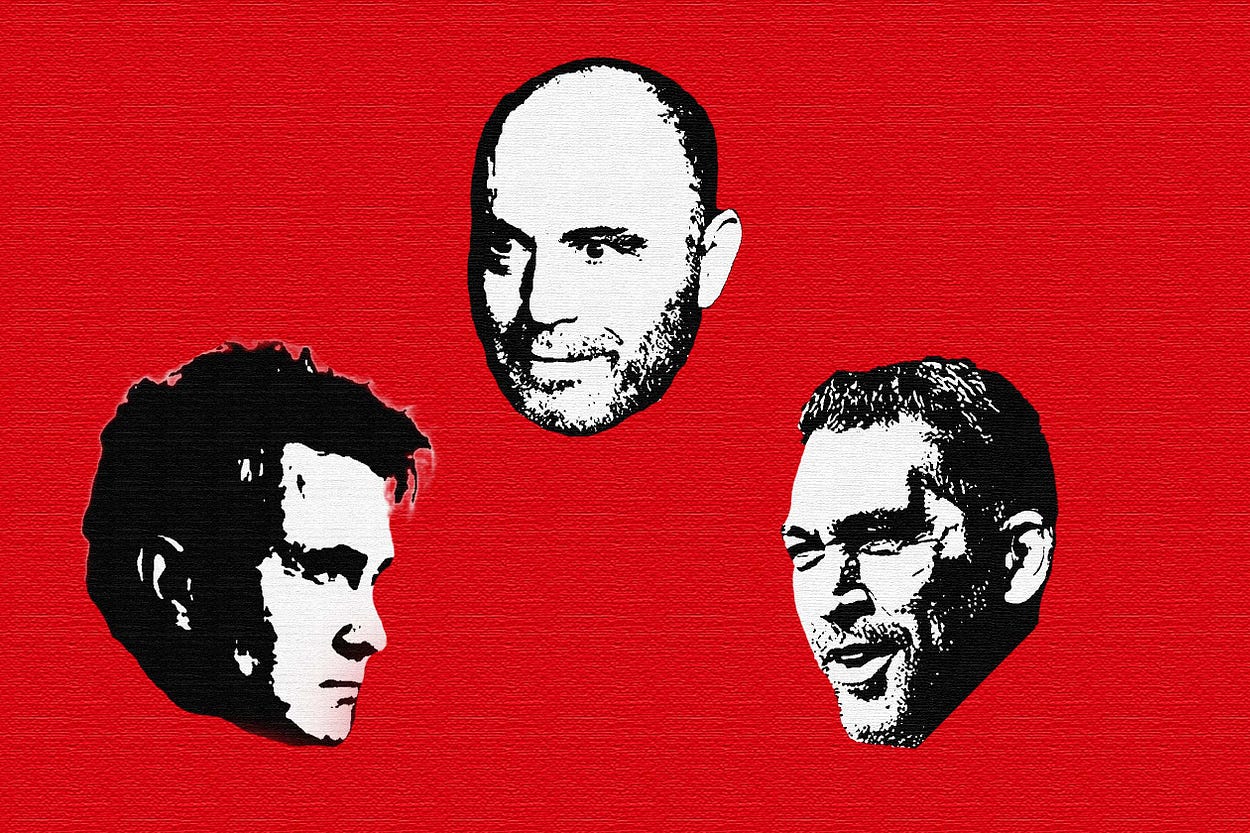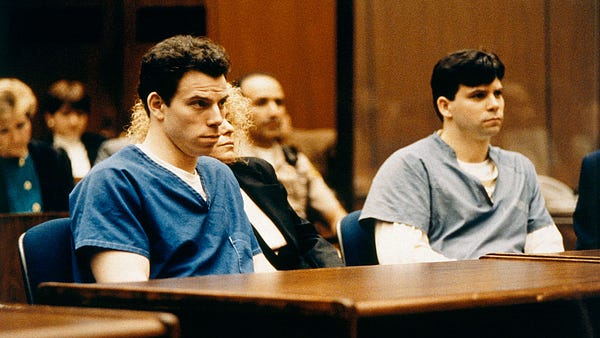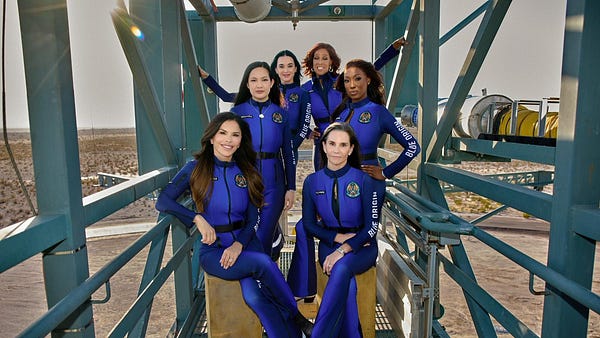
The Free Press

If you read this newsletter you are acutely aware of the transformation of the mainstream media over the last decade and, especially, over the past couple of years. But few have offered a fully satisfying answer to the question of why.
Why is it, for example, that between 2013 and 2019, the frequency of the words “white” and “racial privilege” exploded by 1,200 percent in The New York Times and by 1,500 percent in The Washington Post? Why was the term “white supremacy” used 2,400 times by National Public Radio in 2020?
What changed? Why was there suddenly a relentless focus on race and power? And who—or what—was driving it?
At last those questions have been answered with unusual clarity by Batya Ungar-Sargon in her new book “Bad News: How Woke Media is Undermining Democracy.”
Batya, who is an opinion editor at Newsweek, is hard to pin down politically. I first met her in 2018 and I would have described her then as woke. These days I’d call her a left-wing populist. (She’s part of an endangered species: a person willing to change her mind.) But what I appreciate most about Batya, and what I think you’ll find when you read the essay below, is someone who is able to put ideology aside and pursue to illuminate why the news is broken, how it is fueling one war (culture) to distract from another (class), and how that might be changed. — BW
On November 16, 2018, CNN’s Don Lemon hosted a panel discussion about white women who voted for Donald Trump. There was no real news peg for the story; the president hadn’t spent the morning tweeting about anything specific, and it was 10 days after the midterm elections. But Lemon valiantly torqued them into an awkward hook for the panel: “A wave of women, white, black and brown are sweeping into office after the 2018 election. Does Donald Trump still have the support of a majority of white women and if so, why is that?”
A Friday night capping off a slow news week was as good an opportunity as any to bring up the increasingly hot topic of white supremacy. In fact, the only remarkable thing about the panel was how unremarkable it was, one of a thousand such panels that have graced American airwaves in recent years.
Lemon’s guests were Kirsten Powers, a senior CNN political analyst; Alice Stewart, a CNN commentator playing the supporting role of token Republican; and Stephanie Jones-Rogers, a professor of history at UC Berkeley, whose book “They Were Her Property: White Women as Slave Owners in the American South” had been cited in an article on Vox, a progressive opinion site that caters to millennials.
Powers had much to say about Donald Trump’s female supporters. “People will say that they support him for reasons other than his racist language,” she told Lemon. “They’ll say, ‘Well I’m not racist; I just voted for him because I didn’t like Hillary Clinton.’ And I just want to say that that’s not, that doesn’t make you not racist. It actually makes you racist,” Powers explained. “As for why white women do it,” she went on, “I think we have to remember that the white patriarchal system actually benefits white women in a lot of ways.”
Professor Jones-Rogers concurred. “So, as a historian, I explore white women’s economic investments in the institution of slavery,” she said. “And what that has led me to understand is that there’s this broader historical context that we need to keep in mind when we’re looking at white women’s voting patterns today, and as we look at their support—their overwhelming support of Donald Trump.” Lemon jumped in to note that just over half of white women had voted for Trump—hardly what would constitute “overwhelming” support. Jones-Rogers clarified: “What I meant by overwhelming was emotionally overwhelming.”
The sole Republican, Alice Stewart, was briefly allowed to respond, and voiced her resentment at being called racist for her vote for Trump, whom she chose for his policies. But Powers interjected: It’s not just Republican women who have a problem with racism but all white women, indeed, all white people. “Every white person benefits from an inherently racist system that is structurally racist, so we are all part of the problem,” Powers said. Jones-Rogers heartily agreed. It was a scene as inescapable today as it would have been rare ten years ago.
For a long time, the notion that America is an unrepentant white-supremacist state—one that confers power and privilege to white people and systematically denies them to people of color—was the province of far-left activists and academics. But over the past decade, it’s found its way into the mainstream, largely through liberal media outlets like the New York Times, NPR, MSNBC, the Washington Post, Vox, CNN, the New Republic, and the Atlantic.
What changed? Most obviously: white liberals. Their enthusiasm for wokeness created a feedback loop with the media outlets to which they are paying subscribers. And the impact has been monumental: Once distinct publications and news channels are now staggeringly uniform. A moral panic around race is everywhere: In television segments like Don Lemon’s, and articles like “Is the White Church Inherently Racist?” and “The Housewives of White Supremacy” and “When Black People Are in Pain, White People Just Join Book Clubs” and “How White Women Use Themselves as Instruments of Terror,” which have become the bread and butter of the New York Times and the Washington Post.
Where did this obsession come from? The election of Donald Trump is often given all the credit. Trump was so extreme in his disregard of liberal mores, so willing to offend with comments that were sometimes casually racist—comments that were amplified and justified throughout conservative and right-wing news outlets—that American liberals, including the liberal media, swung hard to the left. This is true: The mainstream media certainly molded itself around Trump, whose presidency was a major gift to MSNBC and CNN and the New York Times—outlets that were facing a bleak outlook are now thriving thanks to the ratings and clicks that the Trump stories generated.
But Trump is an insufficient answer. The moral panic mainstreamed by the liberal news media had actually been underway for at least five years before Trump appeared on the scene. It began around 2011, the year the New York Times erected its online paywall. It was then that articles mentioning “racism,” “people of color,” “slavery,” or “oppression” started to appear with exponential frequency at the Times, BuzzFeed, Vox, the Washington Post, and NPR.
This “Great Awokening” has been impossible to miss if you consume mainstream news. But you don’t have to rely on your impressions. David Rozado, a computer scientist who teaches at New Zealand’s Otago Polytechnic, created a computer program that trawled the online archives of the Times from 1970 to 2018 to track the frequency with which certain words were used. What he found was that the frequency of words like “racism,” “white supremacy,” “KKK,” “traumatizing,” “marginalized,” “hate speech,” “intersectionality,” and “activism” had absolutely skyrocketed during that time.
His work echoes that of another academic, Zach Goldberg, a PhD candidate in political science at Georgia State University who found that in 2010, the term “white supremacy” was used fewer than 75 times in 2010 in the Washington Post and the New York Times, but over 700 times in 2020 alone; at NPR, it was used 2,400 times. The word “racism” appeared in the Washington Post over 4,000 times in 2020. That’s the equivalent of using it in 10 articles every single day.
What could explain the sudden market for this obsession with race and power?
The reason for this radical shift, despite the media’s fixation on race, has very little to do with it. It has everything to do with class.
Journalism has become a profession of astonishing privilege over the past century, metamorphosing from a blue-collar trade into one of the occupations with the most highly educated workforces in the United States. And along with this status revolution has come the radicalization of the profession on questions of identity, leaving in the dust anything commensurate to a similar concern with economic inequality.
The recent obsession with identity has allowed these journalists to pretend—indeed to believe—they are still speaking truth to power, still fighting on behalf of the little guy, even after they have themselves ascended to the ranks of the powerful, even when they are speaking down to an audience who, in more cases than not, have less than them on every measurable scale. It has quite simply been a displacement exercise; instead of experiencing economic guilt about rising inequality and their status among America’s elite, members of the news media—along with other highly educated liberals—have come to believe that the only inequality that matters is racial inequality; the only guilt that matters is white guilt, the kind you can do absolutely nothing to fix, given that it’s based on something as immutable as your skin color.
In other words, despite a no doubt well-intentioned desire to ameliorate racial inequality, their enthusiasm for the language of wokeness has allowed affluent white liberals to perpetuate and even excuse a deeply unequal economic status quo.
If journalists once fought the powerful on behalf of the powerless, in 21st century America, they are the powerful. While the average pay for a journalism job is quite low at around $40,000 a year, that’s because entry-level jobs pay so little; at the higher levels, journalists now make quite a bit more than the average American. More importantly, journalists now have social and cultural power, and they are overwhelming the children of economic elites. After all, to even be able to make it on $30,000 a year while living in the most expensive cities in America (the only ones left with a functioning journalism industry, thanks to the rise of the Internet and the collapse of local newspapers), you have to come from a family with enormous economic privilege who can help you out. Once a blue-collar trade, journalism has become something akin to an impenetrable caste. And what journalists have done with that power, perhaps inadvertently, is to wage a cultural battle that enhances their own economic interests against a less-educated and struggling American working class.
Once working-class warriors, the little guys taking on America’s powerful elites, journalists today are an American elite, a caste that has abandoned its working class roots as part of its meritocratic climb. And a moral panic around race has allowed them to mask this abandonment under the guise of “social justice.”
Take Kirsten Powers, one of Lemon’s guests on that panel in 2018. Powers had been the resident liberal at Fox News until CNN poached her in 2016, for a rumored $950,000 yearly salary.
But for Powers to traverse the ideological distance from Fox to CNN and take advantage of that nearly million-dollar salary, she had to undergo a woke metamorphosis. In 2015, while still employed by Fox, Powers had written a book called “The Silencing: How the Left Is Killing Free Speech.” But in the intervening years, she repented. “I was too dismissive of real concerns by traumatized people and groups who feel marginalized and ignored,” she wrote in a mea culpa in her USA Today column.
Newly reformed, Powers was able to take to CNN and join a panel to discuss how racist every white person in America is, especially anyone who voted for Trump (there was a bit of slippage between those two contradictory positions). That Lemon panel in 2018, typical in every way of our national news media, featured two television hosts with millions of dollars in the bank, who were convinced that white supremacy is alive and well in America.
“When people hear ‘privilege,’ they think that means I’m, like, a Richie Rich, and I’m living a rich life. That’s not what it means,” Powers patiently explained later in the CNN segment, without any apparent irony. “It just means you have a privilege that people of color don’t have.”
Why are affluent white liberals so eager to believe we’re living in a white-supremacist state, and that they are the beneficiaries of white supremacy? There are a number of explanations.
In his 2007 book “White Guilt: How Blacks and Whites Together Destroyed the Promise of the Civil Rights Era,” Shelby Steele argues that the success of the civil rights movement resulted in a crisis of moral authority in white America when it recognized its collective role in the sin of racism. Writing in the 1990s, the historian Christopher Lasch argued that the Left had begun to portray the nation, the neighborhood, and even the commitment to a common standard as racist, as part of a larger attack on populism and abandonment of the working class.
More recently, in his book “Hate, Inc.,” Matt Taibbi explores how the media uses a fake notion of dissent to hide all the issues relevant to real Americans that it refuses to cover. “We manufactured fake dissent, to prevent real dissent,” writes Taibbi in a nod to Noam Chomsky’s famous work “Manufacturing Consent.” And we know that historically, at least since the Russian Revolution, the intelligentsia has gone to great lengths to portray its own economic interests and power hoarding in the guise of a noble cause that works on behalf of the powerless.
I think these are all pieces of the puzzle. But there’s another real reason that, however unconscious, is certainly also at play, and it’s this: Wokeness perpetuates the economic interests of affluent white liberals. I believe that many of them truly do wish to live in a more equitable society, but today’s liberal elites are also governed by a competing commitment: their belief in meritocracy, or the fiction that their status was earned by their intelligence and talents. Today’s meritocratic elites subscribe to the view that not only wealth but also political power should be the province of the highly educated. Still, liberals see themselves as compassionate and progressive. And perhaps unconsciously, they sought a way to reconcile the inequality that their meritocratic status produces with the compassionate emotions they feel toward the less fortunate. They needed a way to be perpetually on what they saw as the right side of history without having to disrupt what was right for them and their children.
A moral panic around race was the perfect solution: It took the guilt that they should have felt around their economic good fortune and political power— which they could have shared with the less fortunate had they cared to—and displaced it onto their whiteness, an immutable characteristic that they could do absolutely nothing to change.
This is how white liberals arrived at a situation where instead of agitating for a more equal society, they agitated for more diverse elites. Instead of asking why our elites have risen so far above the average American, they asked why the elites are so white. Instead of asking why working-class people of all races are so underrepresented in the halls of power, white liberals called the working class racist for voting for Trump. Instead of asking why New York City’s public school system is more segregated than Alabama’s, white liberals demanded diversity, equity, and inclusion training in their children’s exorbitantly priced prep schools.
In other words, wokeness provided the perfect ideology for affluent, liberal whites who didn’t truly want systemic change if it meant their children would have to sacrifice their own status, but who still wanted to feel like the heroes of a story about social justice, who still wanted to feel vastly superior to their conservative and even slightly less radical friends. They took a no doubt genuine abhorrence for the truly heinous ways black Americans have been treated historically—and, in some cases, continue to be treated—and instead of seeing in it a call to arms to create a genuinely equal society, they used it as an excuse to withdraw from the common good and the social contract, rebranding the problem of racism to fit the solution that would most benefit them. In the process, they demonized America itself, deplatforming the working class (of all races) while protecting their own status.
Racism is still a blight on American life. But wokeness is not how we heal; it has simply redefined the problem to the benefit of educated elites. By focusing on immutable characteristics like race, the woke moral panic has allowed economic elites to evade responsibility for their regressive view that elites should not only exist but rule. And in presenting race rather than class and income as America’s deep and worsening divide, the purveyors of wokeness have ended up comforting white, liberal elites, even as they have called them white supremacists.
It would have been impossible without the media. Once a tool to comfort the afflicted and afflict the comfortable, today American journalism comforts the comfortable, speaks power to truth, and insists on an orthodoxy that protects the interests of the elites in the language of a culture war whose burden is given to the working class to bear. In his book “What’s the Matter With Kansas,” Thomas Frank famously asked why white, working-class voters were voting against their own economic interests. But in 2016, when they voted in their own economic interests, those in the media called them racists.
The cost of erasing people who are economically working class from the conversation, the cost of concealing rather than exposing the class divide, has deepened and perpetuated inequality. This is plainly a disaster for anyone who truly cares about a more just society. And certainly for any nation that wishes to see itself as a democracy.
Reading Batya’s piece put me in mind of my conversation with Martin Gurri, whose own book, “The Revolt of the Public,” brilliantly explains our collapsing trust in the media and in so many other institutions in American life. Listen here:














Agreed with a lot of this. but the only equality we should be pushing for is equality of opportunity.
I strongly oppose any attempts to make equality of outcome. Although we should all be equal in the eyes of the law. That doesn't mean we should all enjoy an even split of the economic pie.
Some people are smarter than others, some people work harder (or work smarter). And some the free market just rewards for their talent to throw a ball (see sports stars etc).
I know a lot of people who are content to just do their 40 hour work week, and then kick back the rest of the time. But if you really want to get ahead that's no where near enough.
I worked 40+ hours a week while going to school to get my MBA. Same for the 10 months of intense studying for my CPA.
You can be damn sure I wouldn't have done that if it wasn't going to carry an economic reward. Mine as well sit around playing video games...
Don't trade BS wokeism, for BS socialism nonsense
This piece describes how wokeness infected one elite K-12 school - they became Yale's dancing bear. https://thenakeddollar.blogspot.com/2021/11/the-spence-yale-connection-or-how.html